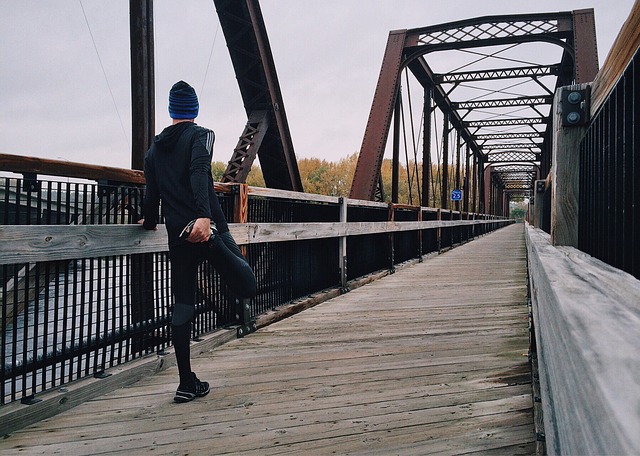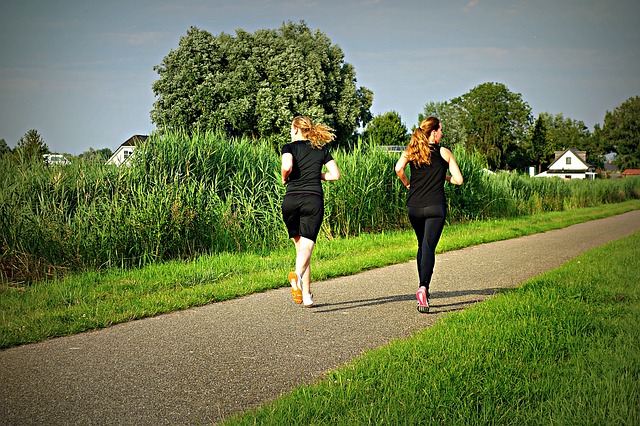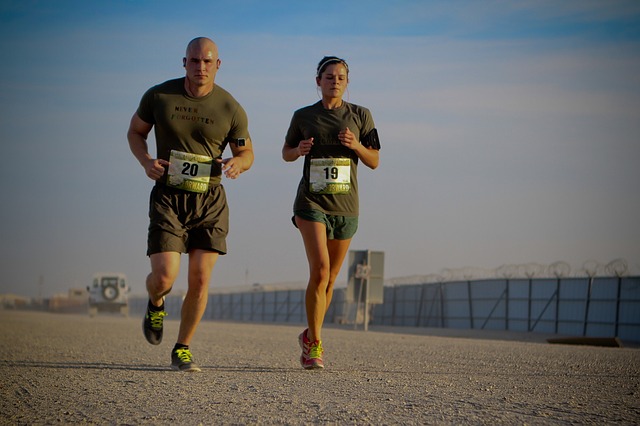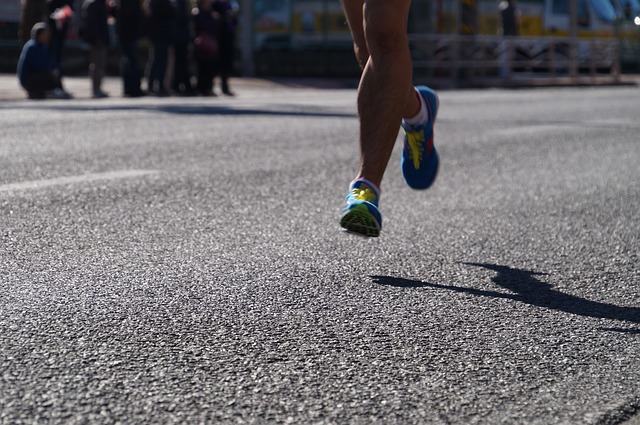
One of our readers asked us: “In the past six months I started running half marathons and graduated to running a full marathon. However, despite doing stretches before my runs, I still have constant pain in my hamstrings and glutes. Please suggest some ways to reduce this pain. I am 51 years of age.”
This type of pain is quite common in runners. Below, we explain why this pain occurs, and how you can heal it so you can get back to enjoying your runs.
Possible Causes of Hamstring and Glute Pain
There are several reasons why the glutes (buttocks) and hamstrings may start to hurt after you’ve been running. Both of these muscles are heavily engaged while running and can become strained or tightened to the point that they cause pain. Potential causes may include the following.
Low Potassium
If you’re not getting enough potassium in your diet, your muscles may be deprived of the nutrients they need to operate correctly. Potassium helps regulate the electric charges responsible for muscle function, but when you sweat while running, your potassium levels drop. If you run low on this mineral, muscle function may deteriorate, causing pain.
The recommended amount of potassium for adults is 4,700 mg per day. To get more potassium, add spinach, potatoes, lentils, squash, raisins, apricots, orange juice, fish, beet greens, yams, avocados, bananas, and soybeans to your diet. Keep in mind that marathon runners may lose a significant amount of potassium through sweat.
Muscle Strain
Sometimes called muscle pulls or tears, muscle strains occur when the muscle fibers become stretched or torn. This happens because the muscle has been stretched beyond its limits, because it’s been forced to contract too strongly, or because you’ve stressed the muscle by doing the same motion over and over without the proper conditioning or rest time in between.
A strain can range from mild to severe, and typically causes pain, swelling, and muscle spasms or weakness. Regular stretching and strengthening exercises help prevent it, but once it’s happened, you need rest. Mild and moderate strains may take 8-10 weeks to completely heal.
Lactic Acid
While you’re running, your muscles use oxygen as fuel. If you’re exercising intensely, the muscle tissues may need more oxygen than is readily available, so they’ll turn to carbohydrates instead.
When the body burns carbs, the process produces a byproduct called lactic acid. This acid builds up in the muscles and causes pain and burning. The pain typically goes away once you stop exercising, and can be relieved with stretching and massage.
Delayed Onset Soreness
If your pain doesn’t appear until about 24 hours after running, it could be that you have microscopic tears in the muscle fibers, causing delayed onset soreness. This is a temporary condition and typically goes away after 3-5 days.
You can trigger delayed onset soreness if you do something outside your normal range of intensity—anything you’re not used to. Applying heat, such as with a jet massage, can help take the edge off. It also helps to take a break from high-intensity workouts, while continuing gentle movement exercises like walking, easy cycling, swimming, or yoga.
Another Potential Cause: High Hamstring Tendinopathy
One of the most common causes of glute and hamstring pain after running is called “high hamstring tendinopathy” or “high hamstring tendonitis.” It’s so common among runners that it’s often referred to as “runner’s butt.”
This sort of pain affects the hamstring tendons where they attach to the ischium of the pelvis, also known as the “sit bone.” This is the lower part of the hip bone, so the issue typically causes deep buttock pain with running and prolonged or brisk walking, pain when accelerating or sprinting, pain when bending at the hip, and pain with sitting on hard surfaces.
Sometimes this injury can aggravate the sciatic nerve, irritating and potentially entrapping it in scar tissue, causing pain to radiate down the hamstring into the back of the thigh and potentially into the foot.
The symptoms usually come on gradually and may be aggravated by repetitive activities like running and cycling, and worsened by prolonged sitting. It frequently accompanies lower back pain. It can be particularly frustrating and difficult to heal and can present a major disruption to your training plans.
All of the following can increase your risk of this type of injury:
- Running middle to long distances
- Regularly jumping and kicking, as track athletes and dancers do
- Having a history of other hamstring injuries
- Having tight or weak hamstring and glute muscles, or failing to warm up adequately before working out
- Being middle-aged and older
- Being female (female athletes are at a higher risk than male athletes)
- Having an anterior pelvic tilt (pelvis is tilted forward)—this can increase the forces around this area and cause injury
- Having weak core muscles
- Being overweight
- Allowing inadequate resting periods between training periods
- Wearing old or worn footwear.
- Having muscle imbalances between the hamstrings and quadriceps
If you suspect this injury, talk to your doctor. Typical signs include pain when sitting, tenderness when pushing around the sit bone, and side-to-side differences in the range of motion. Treatment includes rest, ice and heat, and stretching, as well as strengthening exercises. Non-steroidal anti-inflammatory drugs (NSAIDs) can help relieve pain and reduce inflammation.
How to Prevent Hamstring and Glute Pain When Running
To help prevent this type of injury in the first place, follow these tips:
- Snack: Eat a pre-workout snack that is low in fat and high in carbohydrates, with some protein.
- Warm-up: Warm-up with a little cardio and dynamic stretching to prep your muscles and joints for running.
- Move steadily: Do not abruptly stop while running—keep steadily moving to push blood to your taxed muscles, which will help in repair.
- Stay hydrated: While running, drink water every 15 minutes.
- Replace lost electrolytes: If you’re sweating a lot during a hard, long run, replace the electrolytes you lose through sweat with a sports drink or electrolyte-rich foods like bananas or avocados.
- Stretch: After your run, stretch, and use a foam roller to massage out knots and increase blood flow to your muscles. A good stretch to do after running to help prevent hamstring and glute pain is described below.
- Post-workout snack: Immediately after running, eat a post-workout snack that has a 4:1 ratio of carbs to protein to help restore the nutrients lost in the muscles while running. Try chocolate milk or a protein snack washed down with tart cherry juice, which has also been shown to reduce soreness.
- Massage: Consider getting a sports massage to increase circulation and break up major knots in problem areas that are always sore.
- Cool off: Take a cold shower post-workout to reduce inflammation of the muscles. Or try an ice bath, which has been shown to reduce muscle soreness by 20 percent.
Try this after-running stretch to reduce the risk of hamstring and glute pain:
- Find a standard lunge position: Hands directly under shoulders, with one foot set on the outside of your hand, toe facing straight ahead, knee directly over the ankle.
- Relax and drop the hip of the extended leg as close to the ground as possible.
- From here, you’re going bend and straighten the front (bent) leg.
- The back leg will stay extended and relaxed.
- Use your hands and front heel to push into extension through the front hamstring, leaving the head and neck relaxed to face the leg.
- Complete 20 “bend & straightens” per side.
A dynamic movement like this helps to lengthen and relax the hamstrings, without creating that uncomfortable tension or pull often felt in a static stretch.
Stretches and Exercises to Treat Hamstring and Glute Pain
If you’re already struggling with hamstring and glute pain, rest for a few days first, then use the following exercises to help yourself heal.
1. Single-Leg Deadlift
The single-leg deadlift (SLDL) helps improve overall body function, strength, and performance, while also increasing knee stability, hamstring flexibility, and hip hinge ability, and strengthening the hamstrings, quadriceps, and glutes.
- Stand tall and tight (the way you would hold your body in a plank, only standing).
- Slide one leg back behind you while keeping your toes flexed toward your shin.
- Inhaling through your nose, slowly hinge at the hips to lower your torso forward, while simultaneously bending your front knee. Let your back leg raise as far as is comfortable while making sure to maintain a neutral spine.
- Keep the hips and shoulders level with the floor.
- Exhale and press the working foot into the floor to return to standing.
- Repeat 3-5 times each side.
2. Side Plank with Leg Lift
While a side plank pose strengthens the abs, a side plank poses with leg lift adds a new intensity. By lifting the top leg, you add the additional weight of that leg to the mix. This pose uses the isometric hold to help you build strength in your shoulder girdle, arm, obliques, and hip.
- Begin in a full plank with hands under shoulders and feet and thighs touching.
- Squeeze abdominals tightly and open right arm straight into the air turning body to the side so right foot rests on the left foot.
- Squeeze through the waistline and lift the right leg up in line with the hip. Hold for 30 seconds.
- Return to plank and switch sides.
For your complete guide to healing your hamstring injury, make sure to check out the Hamstring Injury Solution, here!





